
Post-mastectomy radiation therapy (PMRT) can significantly reduce the local recurrence of breast cancer and improve the overall survival rate of patients. To further improve the uniformity and accuracy of the target dose and reduce the dose to organs at risk (OAR), intensity modulation radiation therapy (IMRT), field in field (FIF) and other technologies are widely used. However, the target area of PMRT is large, and there is a large setup error, which causes uncertainty regarding the target dose.
From the clinical practices, the size of the traditional vacuum bag is relatively small and difficult to fix it well to the body and arm. Based on the recommendations of the multidisciplinary team, the radiotherapy team from West China Hospital, Sichuan University designed and optimized the shape and size of the new vacuum bag, which is 130 cm long and 100 cm wide. A new vacuum bag was used to immobilize 26 PMRT patients, which could reduce the global setup errors and local setup errors in PMRT.
Design comparison and positioning effect comparison chart of new vacuum bag and traditional vacuum bag
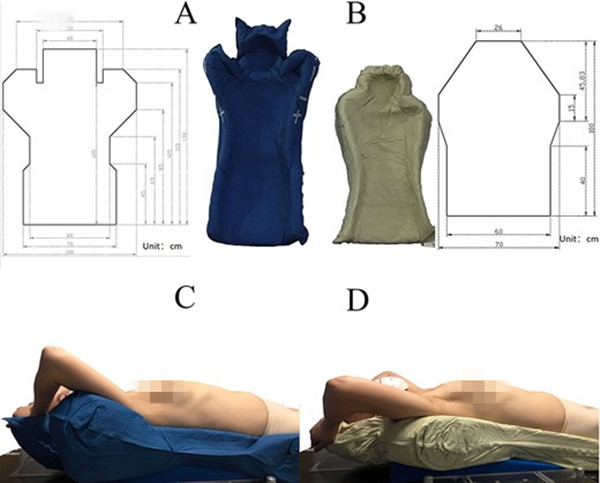
The shape and size of the new vacuum bag (A) and the old vacuum bag (B). The same patient immobilised with the new vacuum bag (C) and the old vacuum bag (D).
Global setup errors and the local setup errors between the new vacuum bag and traditional vacuum bag
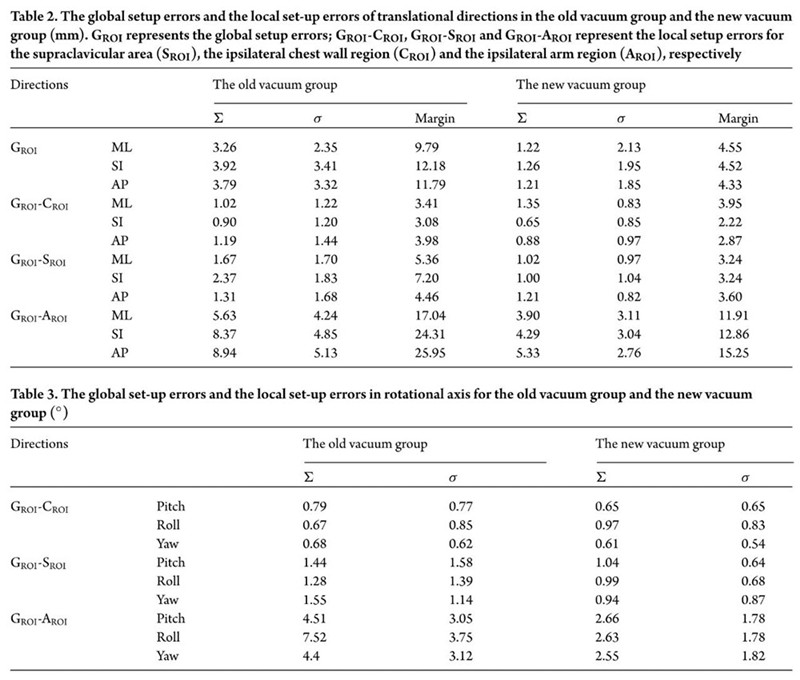
In conclusion, the Klarity new vacuum bag can significantly reduce the global setup errors and local setup errors in PMRT. The respiratory motion of the chest wall is negligible. The 5 mm PTV margin could cover the local setup errors of the sub-regions in PMRT using the new vacuum bag with CBCT online correction.
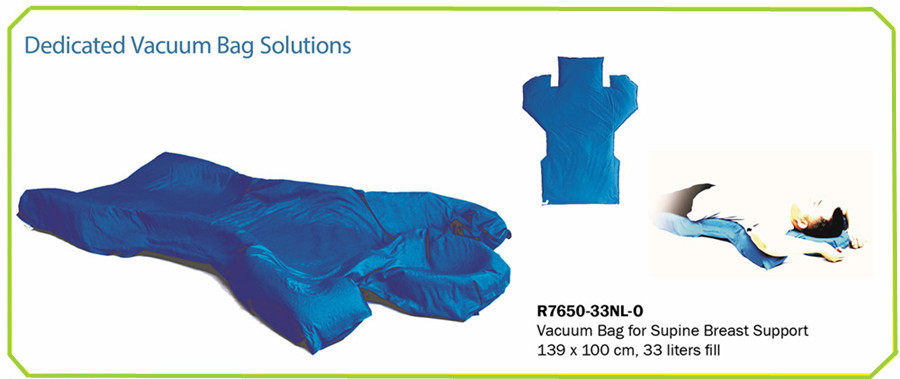
Here's some instructions and tips for the dedicated vacuum bag solutions.
1. Fix the wedge onto the baseplate and place it right next to the Silverman headrest as shown in the below picture.

2. Spread the the vacuum bag on the wedge. Make sure the bag is placed in the center with enough space for the headrest. Half vacuum the bag for easy molding when it as able to hold its own shape.
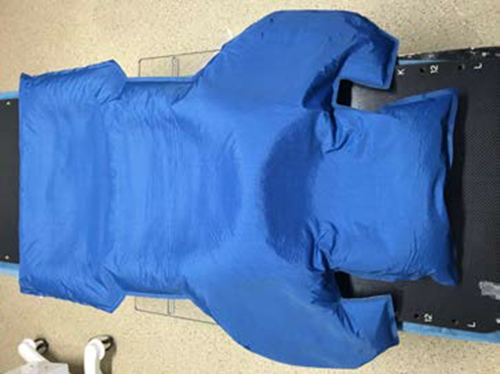
4. Guide the patient to lie down on the vacuum bag. Form the upper side of the bag to fit the shape of the patient's head and to limit the longitudinal movement of the head. Make sure the abduction of the upper limb on the involved side was greater than 90°.
5. Press on both sides of the upper part of the vacuum bag to form an arm shape and prevent motion of the arm which causes deformation and motion of the adjacent chest wall.
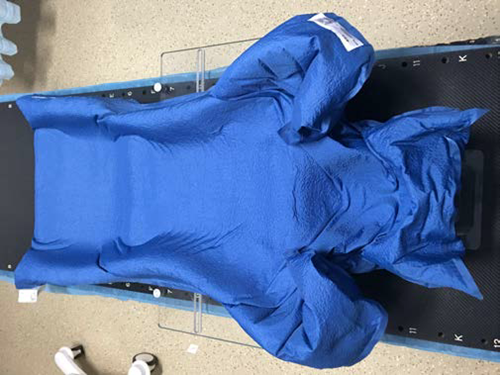
KEY POINTS:
① Make sure the headrest is well fixed;
② Mold the vacuum bag and make it smooth on both sides of the breast;
③ Make the bag hold the patient's buttocks stably.
(Source from Journal of Radiation Research: https://academic.oup.com/jrr/article/61/6/985/5895444 )












